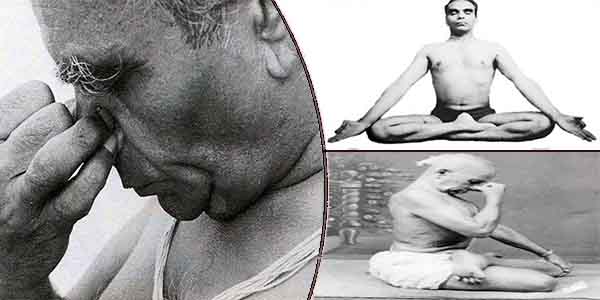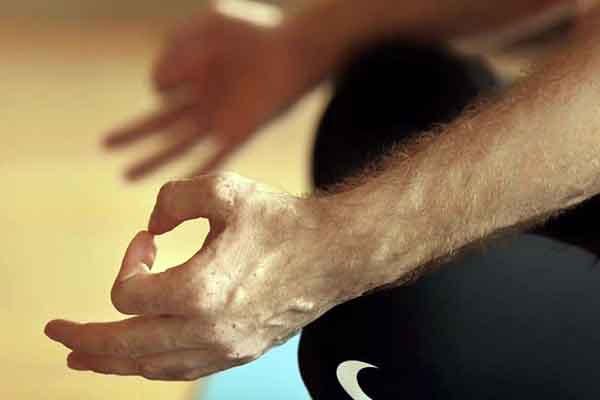Practiced around by millions around the world, Iyengar Yoga is arguably the most popular form of Yoga in the world right now. Taught by late Sri B.K.S Iyengar, yoga postures and breathing techniques have benefitted people with a wide variety of issues from recurring cold to chronic illnesses, bad breath to arthritis, obesity to diabetes, and from a simple cough to coronary thrombosis. There are certain essentials for pranayama described by BKS Iyengar, starting from the first essential which is eligibility, there are total 5.
Navigator
Never a brand name
It is important to note that B.K.S Iyengar or Guruji as he was respectfully known to his pupils, never gave a brand name to his teachings and techniques. He always said that he is teaching what he was taught by Sri T. Krishnamachari, his Guru, and explaining the wisdom of ancient Hathyogis in a way best known to him. He gave preference to quality rather than quantity. The number of asanas and repetition of it was not given much significance rather the accuracy and hold time in a posture were given utmost importance. The same was the case with breathing techniques. He emphasized an individual’s capacity to breathe control.
For example in classic treatise on Yoga- Hath Yog Pradipika , it is mentioned that one should practice Pranayama 4 times a day. Early morning, noon, evening and midnight with a repetition of 80 cycles in one session. He clearly explained such a tedious discipline is not possible in modern times and 15 minutes of practice is enough for a practitioner. Also 80 cycles was suggested only for very devoted followers and common house holders were asked to refrain from such adherence.

Iyengar pranayama essential 1: Eligibility
A kid starts his school from a nursery class and then gradual moves to higher classes. After schooling, he chooses particular subjects of interest to graduate and then goes for specialization in a post-graduate course. A kid in the 8th standard is not qualified to appear for an engineering exam similarly a yoga student must attain strength and discipline by practicing of Asanas, only then he is eligible to practice Pranayama. Iyengar Yoga repeatedly highlights the guidance of an experienced Guru as a necessity. Lungs are used as a pneumatic tool in the practice of pranayama. Training and advancement without the keen observation of a Guru can lead to the destruction of the pneumatic tool and the person using it.
Iyengar pranayama essential 2: Food and cleanliness
Simply putting, when you visit a holy place of worship, you usually wash your dirty legs and clean your hand, similarly when a yogi enters the temple of his own body, he should wash off his physical and mental impurities. Empty bladder and clean bowel allows good practice of BANDHAS or locks.
Light liquid can be taken before the practice but empty stomach is ideal for Pranayama practice. Half an hour after finishing the session, one should start with a light meal not with heavy full course meal
Iyengar pranayama essential 3: Time and season
Brahm Muhurat is Sanskrit term for time just before sunrise and Gau Dhuli Bela refers to the time of evening when cattle come back to the farm after grazing in the field. So time just before sunrise and just after sunset is deemed best for the practice of Pranayama.
For beginners, the starting of spring and autumn season is more beneficial than taking initial lessons in summers or winters.
Iyengar pranayama essential 4: Place
Under the guidance of a guru, it is advised in Iyengar yoga to practice pranayama in a clean place which is well ventilated and away from the noise. A particular sitting area of a room should be fixed and also the posture in which one sits for the session. To explain it further, a noisy place will distract your attention so will place which smells foul. Ventilation should also not be confused with a windy place.
If you are comfortable sitting in Sidddhasana then is it instructed to continue the practice in the same asana rather than sitting in Padma Asana or Swastik Asana on other days. The consistency of the area should also be maintained. The Energy generated in and around the body which also referred to as AURA is very much related to the above two factors.

Essential 5: Posture
- Apart from a few exceptions, all Pranayama should be practiced while sitting on the floor with a cloth under. So a woolen blanket is preferred over a cotton shrug. Plastic mats can be used but are not suggested as the first choice.
- Only nose should be used for breathing except in SITALI and SHEETKARI pranayama.
- Erect back from the base of the spine to the neck is essential. An optimum distance from the mammary papilla to navel helps in energizing the various energy centers or CHAKRAS.
- Muscles around the eyes, facial muscles, neck, shoulder, arms, thighs, and feet should all be relaxed.
- The tongue should stay relaxed and passive or unnecessary saliva will accumulate in the mouth.
- Saliva should be ingested during exhalation and never during holding the breath.
- The rib cage movement should be forward and sideways. Shoulder and armpit movement should only be forward for optimized movement of breath.
- Keeping eyes closed helps to calm the wandering mind. Open eyes might lead to slight irritation or burning sensation.
- A bit of hand trembling and perspiration in initial days of practice should be ignored. It happens due to the opening of blockages and increased energy generation in the body.
- Head should hand down from the nape of the neck except where specifically instructed by a qualified Iyengar teacher.
- The left hand should be straight with the wrist resting on the knee
- Mudra or finger position should be clearly instructed by the teacher. Left-hand thumb and forefinger should be gently touching each other in Jnana Mudra.
- The right arm should be bent at the elbow with the tip of the thumb controlling the right nostril and tip of the ring finger controlling the left nostril.
- Iyengar yoga teaches a passive but alert brain during the practice of Pranayama.
- One’s own capacity should be gauged while breathing.
- Except for forceful inhalation and exhalation in BHASTRIKA Pranayama, forceful and stressed breathing is strictly prohibited.
- If rhythmic breathing cannot be followed do not proceed further.
- Perform Asana before practicing Pranayama with a gap of 15 minutes. But you are doing Pranayama first, give a gap at least an hour before asana.
Sarvyoga Takeaway
The above-mentioned pointers are taken from speeches, Guruji’s books, and videos of Iyengar Yoga Teachers and Guruji on the internet. Please take them only as information and if you wish to inculcate it in your routine. The supervision of a certified teacher is recommended.

